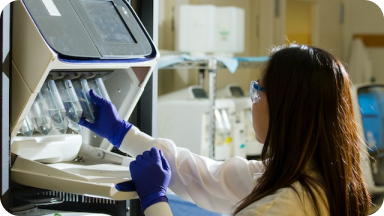May is Brain Tumor Awareness Month, and we asked a few of our favorite researchers to tell us what they are most excited about in brain tumor research. Today we’re bringing you the response from the Filbin Lab at Boston Children’s Cancer and Blood Disorders Center.
What we’re most excited about in brain cancer research right now
By Eshini Panditharatna & Mariella Filbin
Dana-Farber/Boston Children’s Cancer and Blood Disorders Center
https://filbinlab.dana-farber.org/
Over the past decade, fundamental discoveries have been made in describing genetic-driver events of pediatric high-grade gliomas. The recent surge in this area of research is due in part to increased awareness of the extremely poor prognosis of children with high-grade gliomas, motivating a number of research groups around the world to focus on this imminent issue. Each one of these groups has a unique approach to addressing and tackling these deadly tumors, which is what will bring us closer to a cure.
Through these efforts, we have learned that “children are not just little adults” and there is a need for discovering specialized treatments that target the underlying oncogenic events unique to these pediatric tumors. There’s so much more we still need to uncover to gain a comprehensive understanding of pediatric high-grade gliomas.
To this end, we are most excited and focused on understanding the developmental contexts of these tumors, and how dysregulation of these developmental processes can lead to pediatric high-grade glioma. We began our journey by conducting single-cell RNA sequencing studies on patients’ tumors and discovered what is considered to be the cell of origin of diffuse intrinsic pontine glioma (DIPG) and high-grade glioma.
We found these deadly DIPG tumors are composed of a heterogenous mixture of fast-dividing cancer cells, which resemble precursor-like glial cells but, surprisingly, also of differentiated oligodendrocyte- and astrocyte-like cancer cells. These oligodendrocyte- and astrocyte-like cancer cells do not behave like the other tumor cells any more. They stop dividing and become more “normal”, unable to start new tumors or metastases from scratch.
Now, we are interested in identifying the mechanisms that make some of the cancer cells “mature” and behave more normally. If we can, we might be one step closer to our end goal of finding a cure that disrupts these key pathways and prevents the tumor from growing and spreading.
We are applying our finding to preclinical studies by looking for drugs that can differentiate glial progenitor tumor cells into mature types of brain cells, which will no longer be cancerous in a child’s brain. Late last year, we found one drug combination for therapeutic differentiation of DIPG cells, and we are on our way to finding more. We will not stop until we find a cure for these uniformly fatal pediatric high-grade gliomas, and we are determined to rapidly translate our findings to the clinic. Our pediatric patients have no time to waste.

